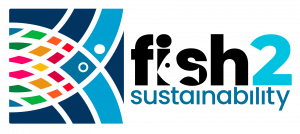Enhancing the Contribution of Small-Scale Fisheries to the Sustainable Development Goal

Small-scale fisheries (SSF) are the backbone of the economy and society in many coastal countries, providing income and food security to millions of people.
Information about SSF remains poor, thus challenging a systematic reporting of SSF activities that could highlight their importance and inform policies. Consequently, SSF are often marginalized in national public policies and their importance in national societies remains poorly assessed and supported.
Although often considered as a resource use problem, the sustainability of SSF extends well beyond Sustainable Development Goal (SDG) 14 and relates to community livelihoods, markets, political economy, among other factors, which has a determinant role on SSF viability. SSF have a greater potential to contribute to achieving UN SDGs than large-scale fisheries. Indeed, there is evidence that SSF support more jobs in small communities (SDG1 and SDG8), contribute more directly to food security (SDG2), employ more women (SDG5), and generally create less harm to the marine environment (SDG14).
As SDGs will pave policy trajectories in the coming decade, a better and more systematic understanding of the interactions between SSF and SDGs is critical to recommend strategies that would enhance the sustainability of that sector.
General objective
Fish2Sustainability (F2S) project aims to create or strengthen national-level communities of practice in SSF in six countries (Colombia, Ecuador, Kenya, Madagascar, Mexico & Nigeria) and help summarize existing knowledge related to the interactions between SSF and SDGs in those countries. Beyond scientific findings, this work will support transformative changes in SSF from the local to the international levels in order to contribute better to SDGs.
Specific objective
Specific objectives will include:
- Developing nation-wide communities of practice in six selected country case studies;
- Designing generic methods that can capture the interactions between SSF and SDGs, including selecting indicators for assessing interactions in the selected countries;
- Identifying SSF data sources and data gaps that can inform selected indicators;
- Assessing evidence-informed synergies and trade-offs between SDG indicators in the context of country-level case studies;
- Identifying relevant pathways for sustainability in different national contexts and providing recommendations to move forward.




